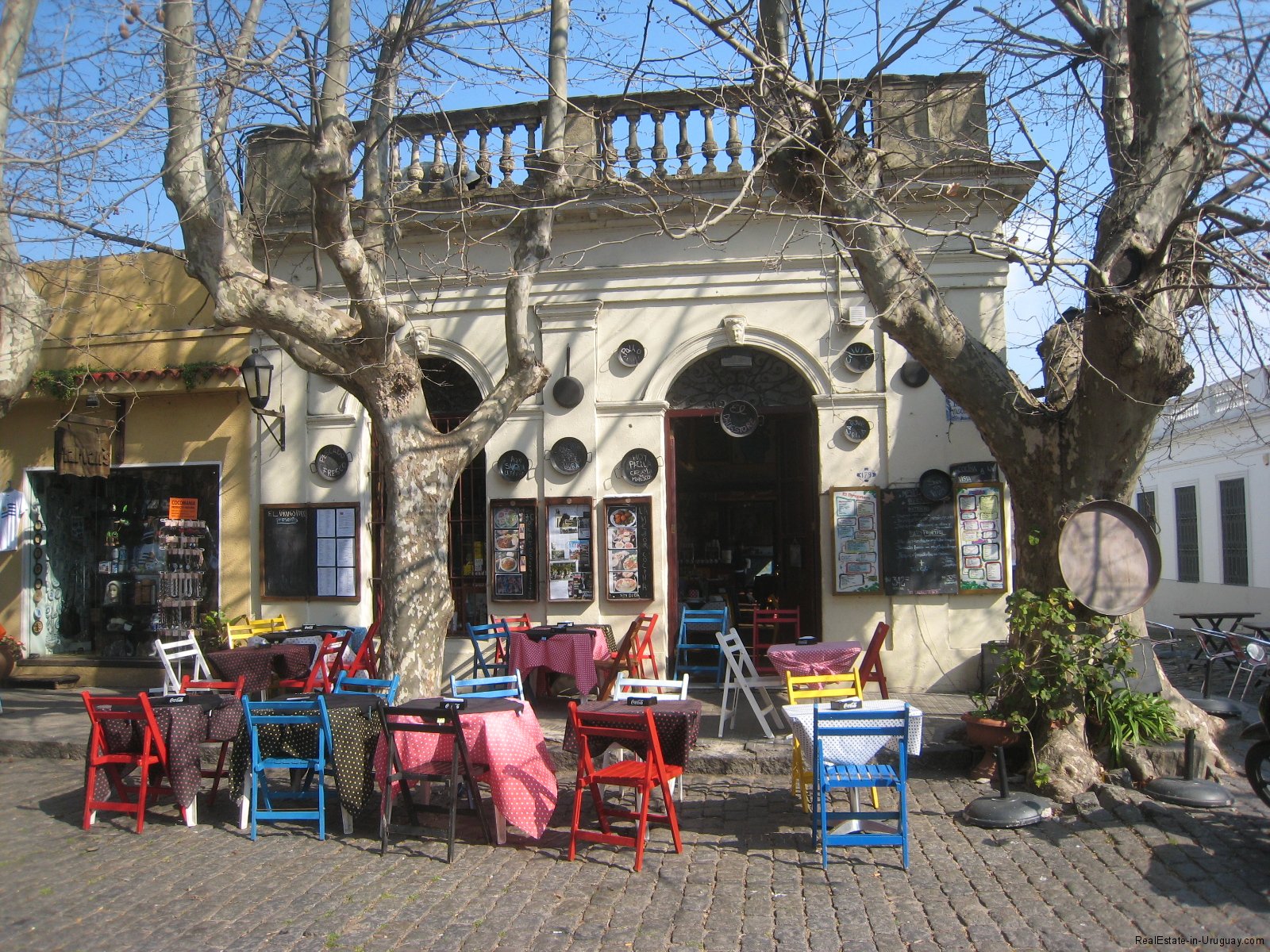Colonia Del Sacramento, Uruguay
Colonia Del Sacramento, influenced by Portuguese domain in Spanish territories, is an exceptional example of a mixture of cultures from the colonial times with classic Spanish-Colonial architecture and views to the River Plate.
It is located 180 kilometers west of Montevideo in the northern coast of Rio de la Plata and north of Buenos Aires just at the exit of the Uruguay River which separates Uruguay from Argentina. From Buenos Aires, several ferries connect Colonia in a one hour journey. The ships are very well equipped with comfortable seats, a coffee shop, and even with a Duty-Free store. An alternative route is the highway that many Argentines prefer to take when visiting Uruguay during their summer vacation. The roads are well connected and give easy access to the two main capitals.
Once in Colonia, getting around is not a problem. The Historic District is on the western side of the peninsula seven or eight blocks from the ferry. Many of the streets in Colonia are made of cobblestone, but there are also wide avenues such as General Flores Street that end in the Historic District.
Chasing a new lifestyle and calm days, many Argentineans have moved to this region with views to the capital of Buenos Aires. The cobblestone streets are lively on weekends with café, vintage, museums and art galleries.
Colonia del Sacramento and it’s old town, a UNESCO World Heritage site, has mixed architectural features and is famous for its cobble-stoned narrow streets and old antique cars parked in front of many different bars, restaurants, and cafes.
Colonia, the only city that was founded by the Portuguese in the Río de la Plata in 1680, was the center of territorial disputes between Spain and Portugal for almost 200 years, so it became one of the most important strongholds in the region.
Because of the condition of this dispute, Colonia Del Sacramento has mixed architectural features, with solid stone Spanish style homes and the Portuguese style houses. The urban layout is Portuguese, characterized by narrow streets showing a rise in its center and water surrounding it on three sides and walls, moat, a fixed bridge, and a drawbridge, and the watchpoints in the four corners of the city. Colonia’s streets also show at least three distinct periods; the colonization of the west end of the peninsula, the colonial times and modern period making it a fascinating place to visit.
Some Highlights of this Historic District
• The Gate of the city, which initially was all enclosed is located in front of the Plaza, inaugurated in 1745 by Governor Pedro Antonio de Vasconcellos to defend themselves from invaders.
• Then, the first site of interest is the Street of Sighs. This narrow street, paved with stones has Portuguese style houses next to each other and a magnificent river view. The name of the street recalls the unfortunate luck of the slaves brought to sell in Colonia.
• The City lighthouse that illuminates the bay next to the ruins of the convent of San Francisco, which is one of the oldest buildings in the city about 1683, is a must-see.
• The Nacarello House, from 1700 built of stone and Portuguese style which now houses the Municipal Museum and the House of Viceroy, has thick walls, stone arches and plenty of historic fact displays.
• Another beautiful place in Colonia del Sacramento is the Bastion del Carmen, ancient fortification of the colonial era and part of the defensive wall of the city.
The Museums of Colonia
There are several museums that can be visited for a value of about 12 dollars. All museums are relatively close to each other, and the circuit is well organized strolling through beautiful places that Colonia del Sacramento has to offer. The Indian Museum, the Tile Museum, and the Spanish Museum are worth visiting with interesting displays of clothes, tools, and manufacturing processes. The Portuguese Museum is well set with glimpses of colonial times and how soldiers and slaves lived in Colonia del Sacramento.
Green
Colonia is also a green city. Trees are everywhere providing a refreshing breeze that invites to walk, talk quietly, and enjoy the moment. The flowers stand out in the gardens and in some places cover up the walls of houses and other buildings. The spacious parks and squares, which can be found everywhere in the city and along the coast as well, reflect an inviting town for visitors to enjoy calm views at the river and a cozy atmosphere of the shops and restaurants.
Also, at the back of the Historic City, the Yacht Harbor is another place to visit at the end of the day. Just sitting on the benches to admire the sun disappearing in the River Plate is very much worth it.
Colonia is a World Heritage site and without doubt one of the most visited tourist cities of Uruguay. It has recently become a meeting point for many conferences and encounters between neighboring countries. Investors have their eyes on the western region of Uruguay due to its strategic location and convenient access to the river.


